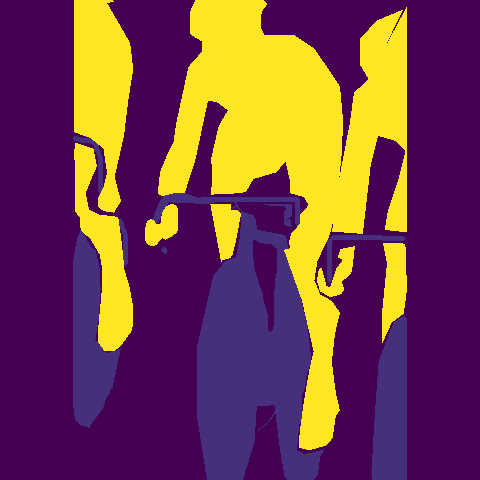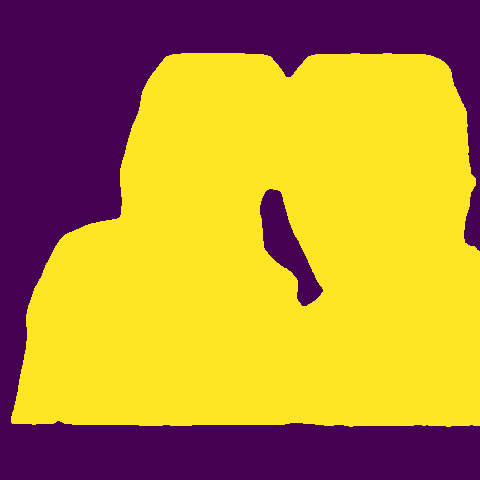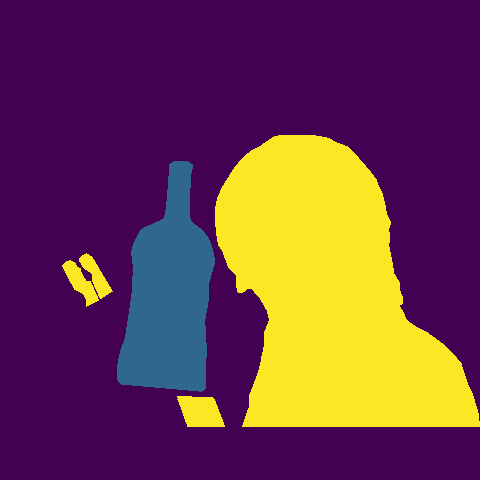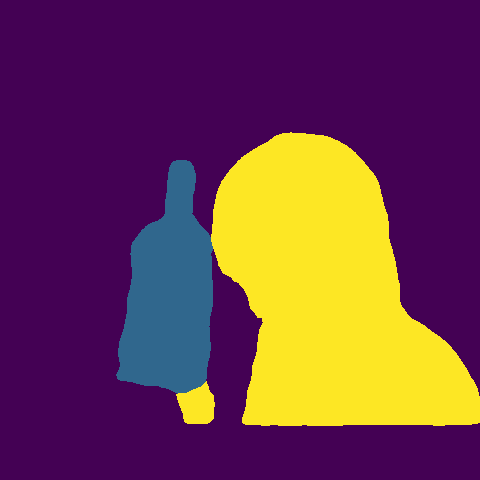PyTorch's Semantic Segmentation Toolbox
- Python 3
- PyTorch >= 1.0.0
Execute the following command in your terminal
pip install --upgrade git+https://github.com/linbo0518/BLSeg.gitFor more information, please see Documentation
- Backbone
- VGG16
- VGG19
- MobileNet v1 (1.0)
- MobileNet v2 (1.0)
- ResNet 34
- ResNet 50 (Modified according to Bag of Tricks)
- SE ResNet 34
- SE ResNet 50 (Modified according to Bag of Tricks)
- Modified Aligned Xception
- Model
- FCN
- U-Net
- PSPNet
- DeepLab v3+
- GCN (Large Kernel Matters)
- Loss
- BCEWithLogitsLossWithOHEM
- CrossEntropyLossWithOHEM
- DiceLoss (only for binary classification)
- SoftCrossEntropyLossWithOHEM
- Metric
- Loss Meter
- Pixel Accuracy
- Mean IoU
- Others
- Xavier/MSRA initialization (support zero gamma in last BatchNorm)
- Pre-trained weight
- Mixed precision training
- Online Hard Example Mining
- Precise BatchNorm
- Freeze/train Backbone model
- Freeze/train BatchNorm layers
Each segmentation model can combine with any backbone without any modifications.
| Backbone \ Model | FCN | U-Net | PSPNet | DeepLab v3+ | GCN |
|---|---|---|---|---|---|
| VGG16 | √ | √ | √ | √ | √ |
| VGG19 | √ | √ | √ | √ | √ |
| MobileNet v1 | √ | √ | √ | √ | √ |
| MobileNet v2 | √ | √ | √ | √ | √ |
| ResNet34 | √ | √ | √ | √ | √ |
| ResNet50 | √ | √ | √ | √ | √ |
| SE ResNet34 | √ | √ | √ | √ | √ |
| SE ResNet50 | √ | √ | √ | √ | √ |
| Modified Aligned Xception | √ | √ | √ | √ | √ |
Model pre-trained on augmented PASCAL VOC2012 dataset with 10582 images for training and 1449 images for validation.
You can download pre-trained parameters at Google Drive
- Parameters
| Backbone \ Model | FCN | U-Net | PSPNet | DeepLab v3+ | GCN |
|---|---|---|---|---|---|
| VGG16 | 134.82M | 25.26M | 19.71M | 20.15M | 15.36M |
| VGG19 | 140.13M | 30.57M | 25.02M | 25.46M | 20.67M |
| MobileNet v1 | 226.07M | 14.01M | 13.71M | 12.44M | 4.04M |
| MobileNet v2 | 276.46M | 2.68M | 15.67M | 13.36M | 2.88M |
| ResNet34 | 141.38M | 24.08M | 26.28M | 26.72M | 21.76M |
| ResNet50 | 451.92M | 66.35M | 46.61M | 40.37M | 25.09M |
| SE ResNet34 | 141.54M | 24.25M | 26.44M | 26.87M | 21.92M |
| SE ResNet50 | 454.44M | 69.03M | 49.13M | 42.89M | 27.61M |
| Modified Aligned Xception | 466.25M | 57.46M | 60.95M | 54.71M | 39.17M |
- Multiply-accumulate operations (MACs)
| Backbone \ Model | FCN | U-Net | PSPNet | DeepLab v3+ | GCN |
|---|---|---|---|---|---|
| VGG16 | 348.11G | 114.79G | 121.38G | 121.38G | 85.42G |
| VGG19 | 390.27G | 136.54G | 103.21Gs | 127.44G | 107.17G |
| MobileNet v1 | 228.52G | 37.83G | 52.41G | 52.41G | 8.24G |
| MobileNet v2 | 240.77G | 3.22G | 58.00G | 58.00G | 5.80G |
| ResNet34 | 230.69G | 34.99G | 109.88G | 109.88G | 23.65G |
| ResNet50 | 326.75G | 133.01G | 178.64G | 178.64G | 29.44G |
| SE ResNet34 | 230.70G | 35.00G | 109.90G | 109.90G | 23.66G |
| SE ResNet50 | 326.81G | 133.05G | 178.72G | 178.72G | 29.47G |
| Modified Aligned Xception | 359.83G | 83.46G | 237.01G | 237.01G | 44.88G |
| Original Image | Ground Truth | Ours |
|---|---|---|
 |
 |
 |
 |
 |
 |
 |
 |
 |
See Changelog
- Simonyan, Karen, and Andrew Zisserman. "Very deep convolutional networks for large-scale image recognition." arXiv preprint arXiv:1409.1556 (2014).
- Howard, Andrew G., et al. "Mobilenets: Efficient convolutional neural networks for mobile vision applications." arXiv preprint arXiv:1704.04861 (2017).
- Sandler, Mark, et al. "Mobilenetv2: Inverted residuals and linear bottlenecks." Proceedings of the IEEE Conference on Computer Vision and Pattern Recognition. 2018.
- He, Kaiming, et al. "Deep residual learning for image recognition." Proceedings of the IEEE conference on computer vision and pattern recognition. 2016.
- Xie, Junyuan, et al. "Bag of tricks for image classification with convolutional neural networks." arXiv preprint arXiv:1812.01187 (2018).
- Hu, Jie, Li Shen, and Gang Sun. "Squeeze-and-excitation networks." Proceedings of the IEEE conference on computer vision and pattern recognition. 2018.
- Long, Jonathan, Evan Shelhamer, and Trevor Darrell. "Fully convolutional networks for semantic segmentation." Proceedings of the IEEE conference on computer vision and pattern recognition. 2015.
- Ronneberger, Olaf, Philipp Fischer, and Thomas Brox. "U-net: Convolutional networks for biomedical image segmentation." International Conference on Medical image computing and computer-assisted intervention. Springer, Cham, 2015.
- Zhao, Hengshuang, et al. "Pyramid scene parsing network." Proceedings of the IEEE conference on computer vision and pattern recognition. 2017.
- Chen, Liang-Chieh, et al. "Encoder-decoder with atrous separable convolution for semantic image segmentation." Proceedings of the European Conference on Computer Vision (ECCV). 2018.
- Peng, Chao, et al. "Large Kernel Matters--Improve Semantic Segmentation by Global Convolutional Network." Proceedings of the IEEE conference on computer vision and pattern recognition. 2017.


